Writing in the Woods
The Djerassi Playwrights Initiative
In the meadow, the musicians are still; one holds a flute posed to play, and another a guitar waiting to be plucked. The face, the hands, the flute, the guitar, are covered with moss, dangling like beards or drying laundry—swaying in silence in the wind.
These four musicians, made of wood and held sturdy by metal, in stubborn resistance against the downward grasp of gravity and time, were the stewards of this place, the true inhabitants. Along with the charred cube, its black skin slowly conquered by moss. And the sphere. The pyramid, the concrete trapezoidal giants, and the wooden column ringed with rope. Along with the lizards, and the moths, the deer, the birds and coyotes, the occasional snake, and a teeming variety of plants—oaks, redwoods, manzanita, and hillsides of poppies, golden as the sun. We, the dancer, the designer, the musicians, the director, and the many writers, were the visitors. We came to work, and as we discovered, to wander.
Wander is what Margot Knight encouraged us to do when we arrived at Djerassi Resident Artists Program, where she serves as the devoted and determined executive director. “Abandon your plans,” she told us at the morning orientation of our first full day. Being here on these miles of undeveloped land was a gift. Of time. Of space. Of permission. She invited us to relax our goals of daily word-count productivity, and discover what might happen if we allowed ourselves to simply be.
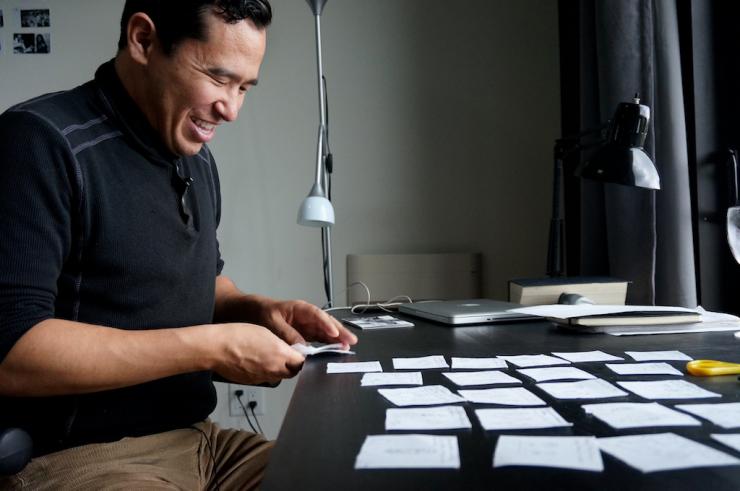
Djerassi Resident Artists Program is studded with sculptures created by prior resident artists, designed to fade into nature. The program was founded in 1979 by late scientist and writer Carl Djerassi, who was famous for “inventing” the Pill. It is an artist retreat tucked amidst mountains in Woodside, California, centered snugly in the middle of a peninsula hugged by the Pacific Ocean to the west, and the San Francisco Bay to the east. The land, formerly covered with redwoods before they fell victim to civilization’s timber craze, still hosts small groves of these towering elder sentries, witnesses to vast transformations over superhuman stretches of time, who dig roots into the earth crisscrossed by zigzagging flows of water. We were lucky. For years now, Djerassi’s creek beds more often than not run dry.
At this moment of our national tilt into uncertainty, an institution founded with fortunes gained from a scientific breakthrough that allowed women to increase agency over their lives, now supports writers of color…programs such as the Djerassi Playwrights Initiative feel more important than ever.
Djerassi encourages a similar flow within the minds and spirits of its resident artists. The land itself awakens that flow. This was my experience while living in the Santa Cruz mountains from 11 April through 10 May, 2016. I had the honor of being the second participant in the Djerassi Playwrights Initiative, a new and ongoing collaboration with three theatre organizations throughout the country (listed below) that offers half a dozen playwrights of colors month-long residencies at Djerassi. It seems appropriate, particularly at this moment of our national tilt into uncertainty, that an institution founded with fortunes gained from a scientific breakthrough that allowed women to increase agency over their lives, now supports the bolstering of agency of writers of color. Given the current political monstrosity consuming our country, programs such as the Djerassi Playwrights Initiative feel more important than ever.
According to Margot,
We ran a demographic analysis on our applicants and found playwrights in general and specifically, playwrights of color to be underrepresented. In consultation with alumni and knowing of the vitality in the field, we approached Playwrights Foundation in SF (Amy Mueller), Latinx Theatre Commons/Carnaval/DePaul University (Elizabeth Portes), and New Black Fest (Keith Josef Adkins) to join us in providing residencies for some new voices.
Notably, one Djerassi alumna who helped Margot conceive of the Playwrights Initiative was Kara Lee Corthron. The program is supported by the NEA and several private donors, and provides chosen playwrights with travel stipends as well as all food, lodging, and local transportation for thirty days.
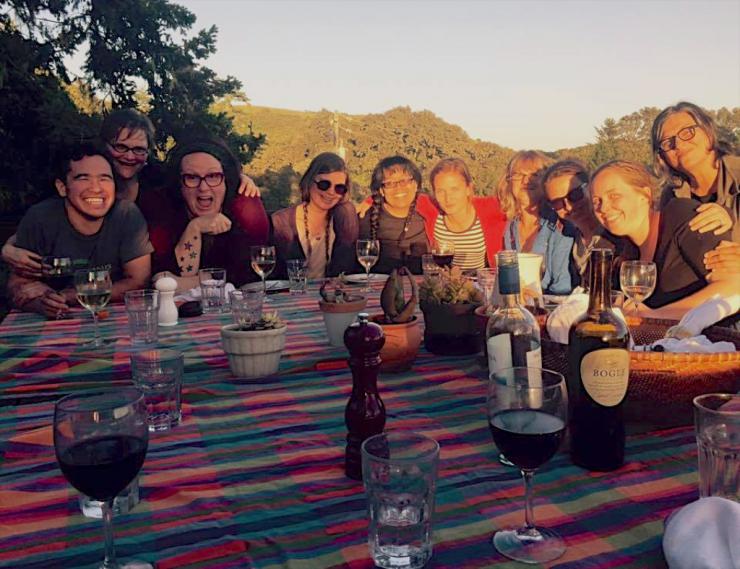
The other 2016 playwrights were: Dennis A. Allen II, from Hemstead, NY; Tearrance Chisholm, from Washington, DC; Magdalena Gomez, from Springfield, MA; Virginia Grise, from the Bronx; and Mona Rae Washington, from Cinnaminson, NJ. The playwrights participating in the Initiative this year are Ngozi Anyanwu, from New York; Lisa Rosetta Strum, from Jersey City, NJ; France-Luce Benson, from Brooklyn; Milta Ortiz from Tucson; Matthew Paul Olmos from Los Angeles; and Michael Gene Sullivan and Emilio Rodriguez from Detroit.
Margot adds: “The success of the Program is measured not only by the Fellows' experiences but also by the increase in the number of applications from playwrights of color. This has also had an impact on applicants in prose and poetry as well.”
I had great plans for my four weeks at Djerassi. Some of them materialized. Most did not. However, other, unexpected explorations occurred, bearing fruits I did not know incubated within me. I wrote the first act of one play I intended to complete. I then cobbled together a full draft of another play I had long been tinkering with, sewing together pieces of various, disparate texts. I also outlined a screenplay. And, in my final week, sitting on a bench daily next to a bubbling creek, I wrote a new play inspired by my aborted attempt to apprentice with a shaman in the Peruvian Amazon years ago. With zero intention to do so when I arrived, I left Djerassi having written my most intimate and autobiographical play yet.
I was not alone in experiencing words gush forth. Emilio Rodríguez, a playwright based in Detroit, and the inaugural participant in the Playwrights Exchange in 2015, shared his experience with me: “I finished a first draft of a play in the first week and then did rewrites on that play and two other plays for the remainder of the time. I also wrote some poetry.” Emilio’s accomplishments were facilitated by “the gift of time.” I never realized how much I could accomplish when I have time and am not stressed about hopping from job to job, or getting stuck in traffic.
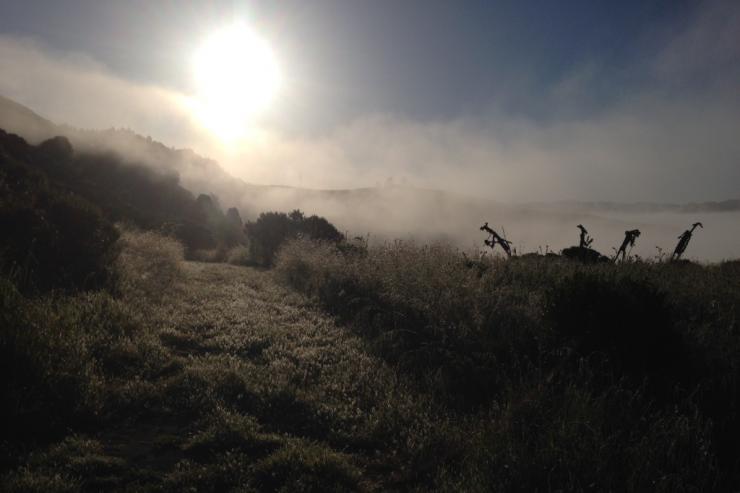
But perhaps the richest gifts at Djerassi were not the projects we finished or started, nor the writing goals we ticked off our lists. The greatest gifts, I would argue, are living with other artists of distinct disciplines, and living on that marvelous land. As Emilio wrote me, “It was great to have dinner with the other artists and to be able to talk about our work. There were days when the creative juices didn't kick in so I just read books. To be able to talk to other artists who also had fluctuations of productivity was comforting.”
My own experience was that the non-theatre artists opened my eyes and mind to other forms, artists, and ways of thought. For example, visual designer extraordinaire Marta Salas-Porras taught me that an artist’s most powerful tool is not writing, acting, or music, but rather the creative force that fuels all artistic expressions. She modeled walking into the unknown, repeatedly challenging herself to try new forms and artistic disciplines.
Guggenheim awardee and filmmaker Iva Radivojevic hosted a film series in the artists’ barn, and exposed me to luminary filmmakers such as Jørgen Leth and Alejandro Jodorowsky, whose name I had often heard, but whose mind-blowing work I had yet to experience.
Emilio describes the Djerassi grounds as “incredibly tranquil and rejuvenating. The silence and slow pace of life was a reminder of how beautiful the smallest things are, the things we don't take time to think about in urban cities. I remember texting my mom ‘there are stars here!’ She thought I meant celebrities but I was just excited to see stars in the sky. It's easy to get caught up in moving to a big city for opportunities but there are life-changing experiences to be had in open rural towns.”
By turning ourselves into machines, we ironically produce an art form inherently organic in its expression—by bodies, movement, voice. Mechanized artistry is often how we get things done.…A month at Djerassi allows another form of practice to emerge.
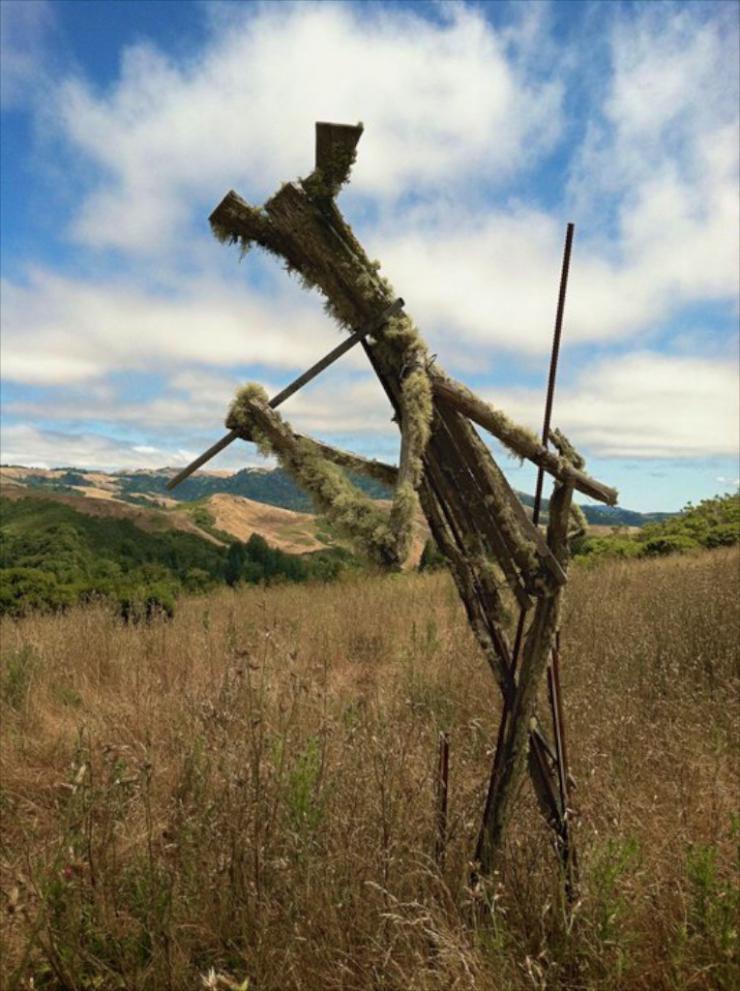
As artists in the theatre, a largely urban art form, it is easy to get caught up in the race toward productivity and accomplishment. It is easy to choose to overwhelm ourselves with activity, or at least its appearance. We pack ourselves to the gills. We ever push toward some future moment. Be it on the subway. On the freeway. On planes, or the blinking cursor advancing lines of text. We juggle jobs. We balance deadlines. Or miss them. We bite off more than we can chew. Such constant flurry is against nature, which has seasons both fertile and fallow. Is such a pace of life highly against us? By turning ourselves into machines, we ironically produce an art form inherently organic in its expression—by bodies, movement, voice. Mechanized artistry is often how we get things done. We push them through. A month at Djerassi allows another form of practice to emerge.
Djerassi is about as far a cry from 42nd Street as I can imagine. There are no straight lines. No right angles. An utter dearth of concrete, steel, and glass. Neon is nonexistent. Instead, stars rule over soil, fern, and wood. Fog shrouds one’s view often, instead of the glare of ever-blaring, ever-moving, yet somehow stagnant screens.
Is it ironic that writing born of forest, born of streams, mulch, and fog should come to full blossom within four walls, the floors shaken by the subway lurching underneath, or the windows rattled by the rumbling wheels on the road?
More ironic still is that this art, these characters and events, presented in boxes, finds ultimate experience and remembrance in the mulch of human memory, in the soil of human souls.

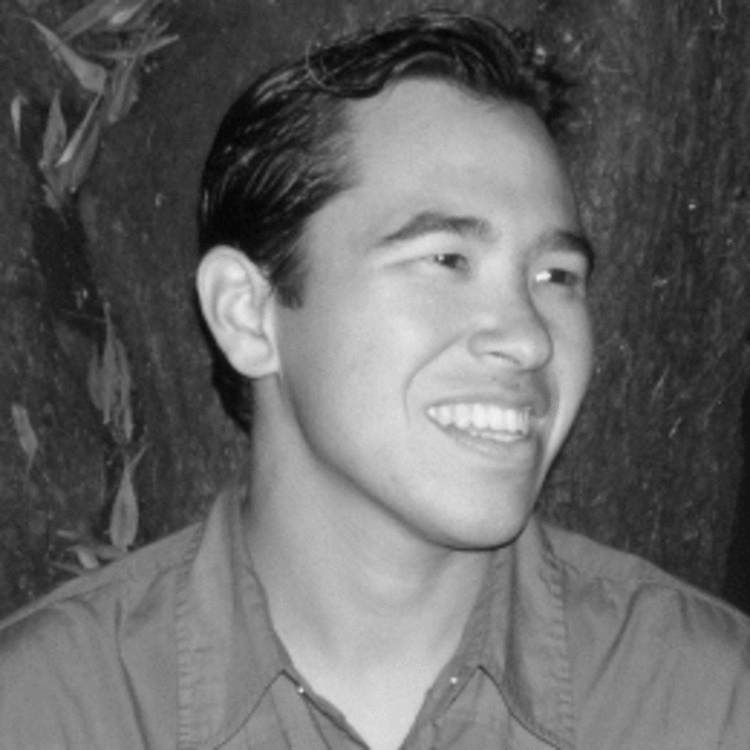
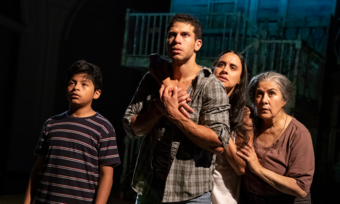


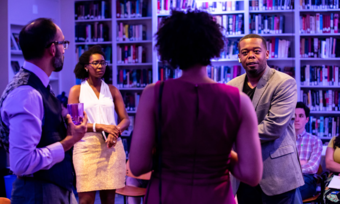


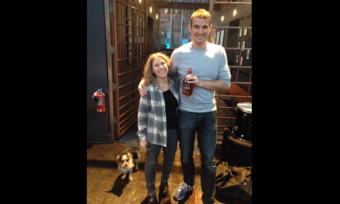

Comments
The article is just the start of the conversation—we want to know what you think about this subject, too! HowlRound is a space for knowledge-sharing, and we welcome spirited, thoughtful, and on-topic dialogue. Find our full comments policy here